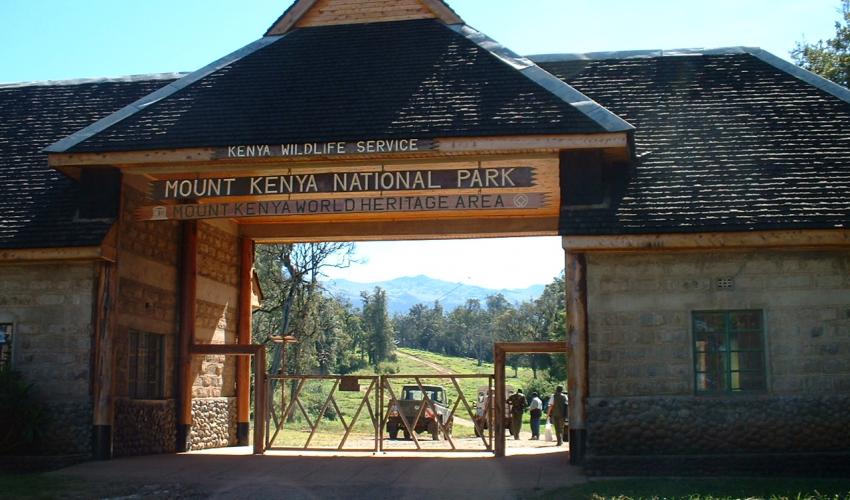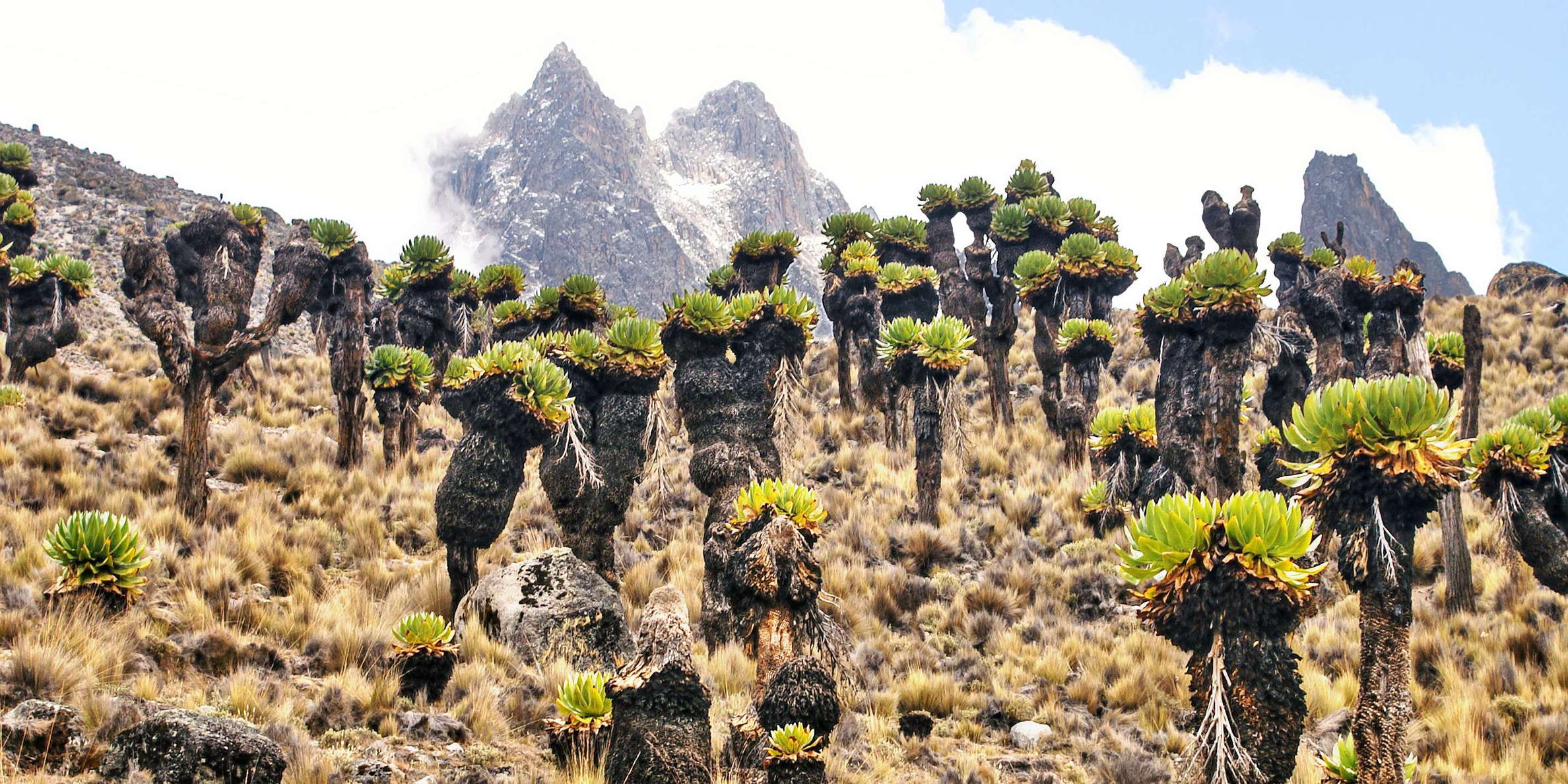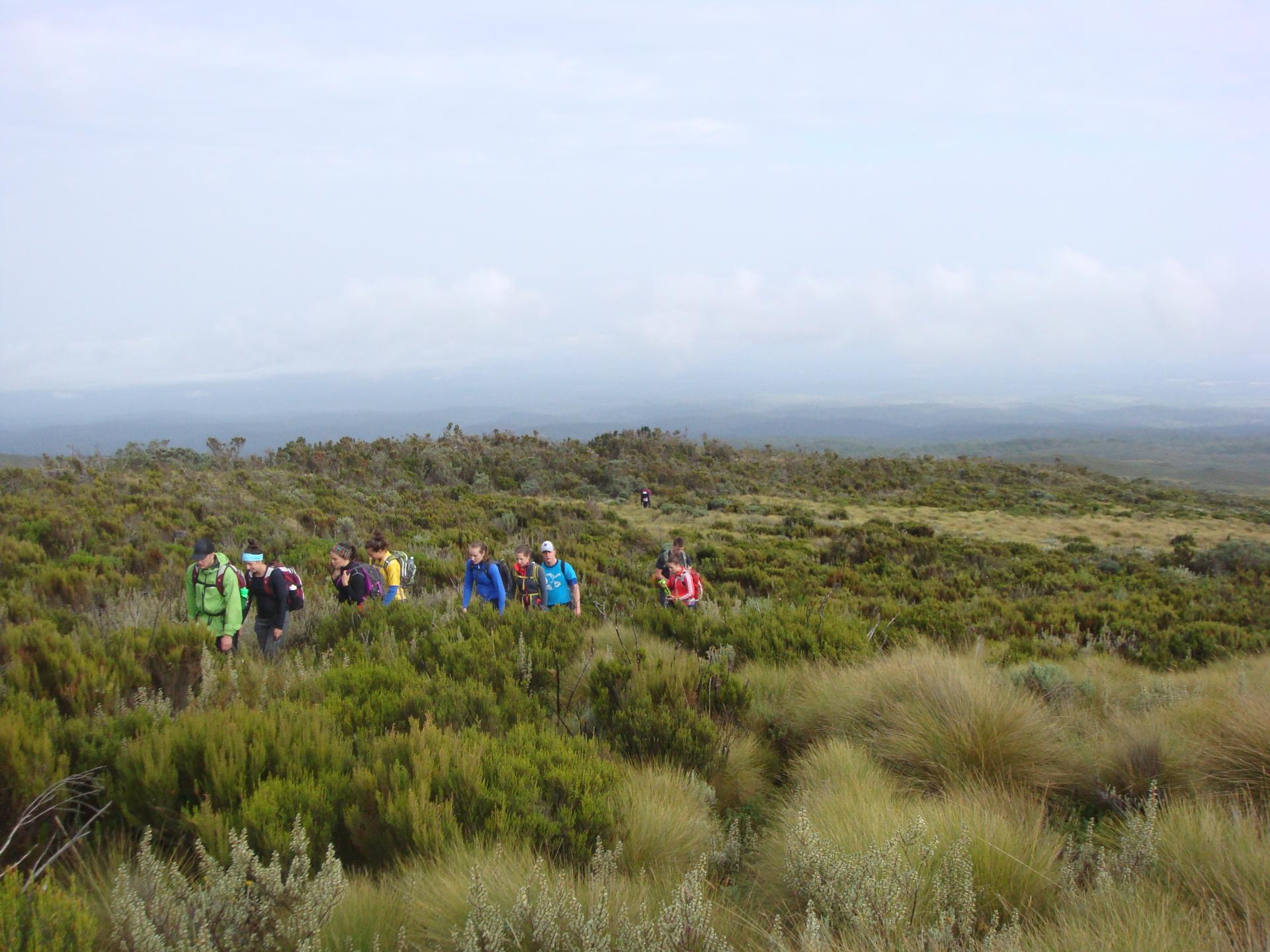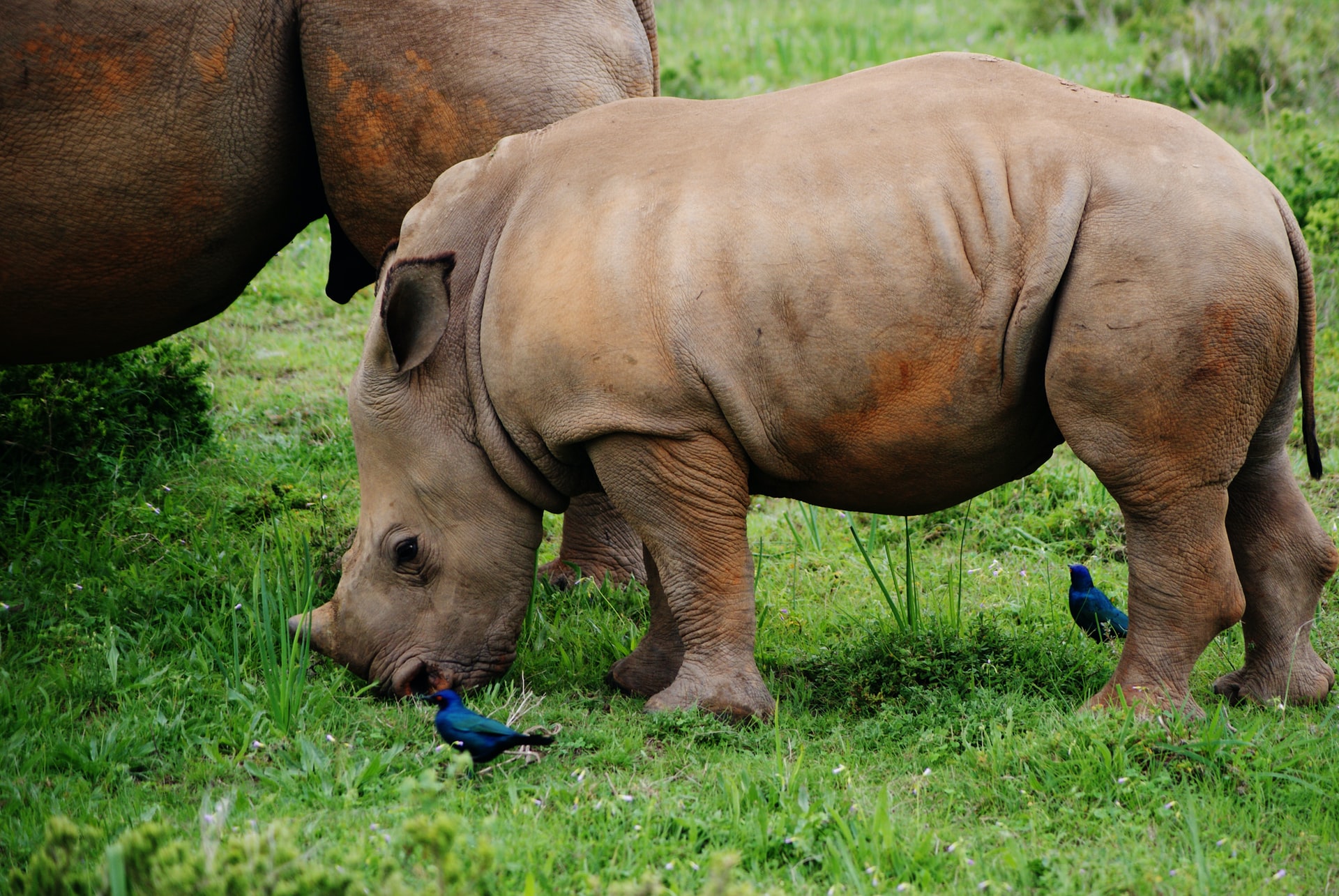













Mt. Kenya is an imposing extinct volcano dominating the landscape of the Kenyan Highlands, East of the Rift Valley. Mt. Kenya lies about 140 km North, North-East of Nairobi with its Northern flanks across the Equator. The mountain has two main peaks – Batian (5200m) and Nelion (5188m). The mountains slopes are cloaked in forest, bamboo, scrub and moorland giving way on the high central peaks to rock, ice and snow. Mt. Kenya is an important water catchment area, supplying the Tana and Northern Ewaso Ngiro systems.
The park includes a variety of habitats ranging from higher forest, bamboo, alpine moorlands, glaciers, tarns and glacial morains.
The park, which was inscribed by UNESCO as a World Heritage Site in 1997 and is also a Biosphere Reserve, covers 715 km2, and includes the Peaks consisting of all the ground above 3200m with two small salients extending lower down to 2450m along the Sirimon and Naro Moru tracks. Surrounding the park is Mount Kenya National Reserve with an area of approximately 2095 km2.
Climate:
Climate, flora and fauna on Mt. Kenya varies with altitude.
MAJOR ATTRACTIONS
Pristine wilderness, lakes, tarns, glaciers and peaks of great beauty, geological variety, forest, mineral springs, rare and endangered species of animals, High altitude adapted plains game, Unique montane and alpine vegetation with 11 species of endemic plants.
Facilities:
Huts: Liki North Hut; Minto’s Hut; Austrian Hut; Mackinders Hut (managed by Naro Moru Lodge); Judmare Hut; Shiptons Hut (managed by Mountain Rock Hotel).
Bandas.
Lodges: Mountain Lodge; Rutundu Fishes Lodge Activities:
Mountain climbing, game viewing.
Common Vegetaion: This varies with altitude and rainfall, and there is a rich alpine and sub-alpine flora.
Between 1200m and 1850m, the vegetation is mainly dry upland forest comprising of Croton associations. Juniperus procera and Podocarpus spp. are predominant in the drier parts of the lower zone (below 2,500m), with rainfall between 875 and 1400mm (Naro Moru and Sirimon tracks on the western slopes). In wetter areas (over 2200mm/year) in the south-west and north-east, Cassipourea malosana predominates.
Higher altitudes (2,500-3,000m with rainfall over 2000mm/year) are dominated by a dense belt of bamboo Arundinaria alpina on south-eastern slopes, and a mosaic of bamboo and Podocarpus milanjianus with bamboo at intermediate elevations (2,600-2,800m), and Podocarpus at higher and lower elevations (2,800-3,000m) and (2,500-2,600m).
Towards the west and north of the mountain, bamboo becomes progressively smaller and less dominant. There are also areas in zones of maximum rainfall 2,000-3,500m with up to 2,400mm/year, where Hagenia abyssinica with Hagenia revolutum predominate.
Above 3,000m, cold (low temperatures) become a more important factor, tree stature declines, and Podocarpus is replaced by Hypericum spp. A more open canopy here results in a more developed understorey. Many of the trees are festooned with mosses. Grassy glades are common especially on ridges. High altitude heath between 3,000m and 3,500m is characterised by shrubs with small leaves like African sage, Protea and Helicrysum.
The lower alpine or moorland zone (3,400-3,800m) is characterized by high rainfall, a thick humus layer, low topographic diversity, and low species richness. Tussock grasses Festuca pilgeri, and sedges Carex spp. predominate. Between the tussocks there are Alchemilla cyclophylla, Alchemilla johnstonii, and Geranium vagans. Above the 3500m contour is the Afro-alpine zone, a moorland characterised by tussock grasses, senecios and lobelias.
The upper alpinezone (3,800-4,500m) is more topographically diverse, and contains a more varied flora. Many of the species here are bizarre, especially the giant rosette plants Lobelia telekii and Lobelia keniensis, Senecio keniodendron and Carduus spp.. Senecio brassica is found in both the lower and upper alpine zone.
There are a variety of grasses on well-drained ground and along the streams and river banks such as megaphytic Senecio battescombei and Helichrysum kilimanjari.
Continuous vegetation stops at about 4,500m although isolated vascular plants have been found at over 5,000m. There are 13 species endemic to Mount Kenya listed in Hedberg, (1951).
